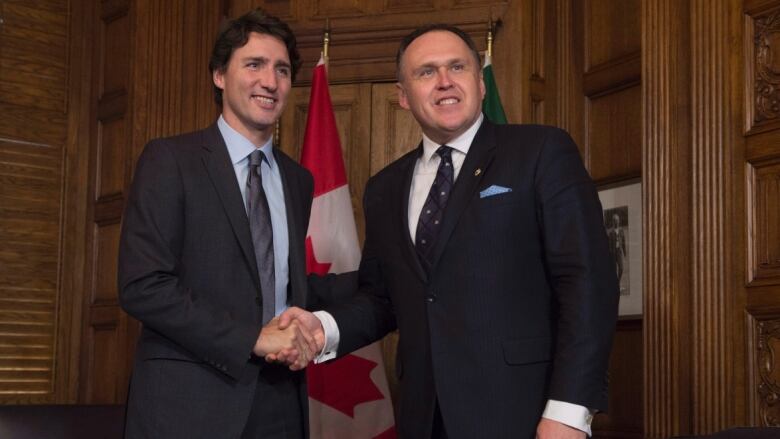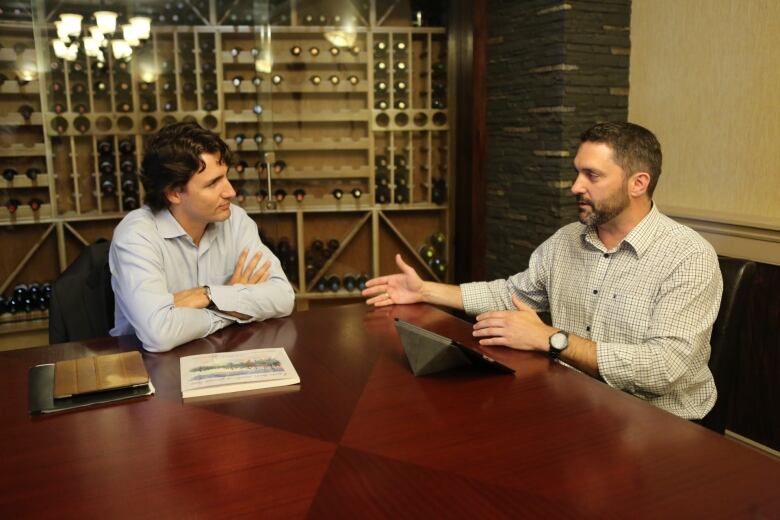Federal precedent favours Yukon Liberals, but campaign will decide the result
Can federal election results in the Yukon tell us who will win the territorial vote?

Yukoners will go to the polls to elect their territorial government on Nov. 7, barely a year after they cast theirballots in last year's federal election. So can the results of that 2015 vote provide any indication of what to expect at the end of this campaign?
While there is a definite relationship between the performance of territorial parties and their federal cousins, that relationship is only strong enough to provide a hint at what may be in store for the Yukon on election day.
- Five things to watch during the Yukon election campaign
- Carbon tax and First Nations relations: Parties lay out their agendas
In six of the 10 elections to the Yukon's Legislative Assembly, the winner of the popular vote came from the same political family as the party that won the territory in the previous federal election. (In one of those six cases, in 1985, the Progressive Conservatives had won more votes than the Yukon NDP but fewer seats.)
On the face of it, asLarryBagnellwon the seat for the federal Liberals last year with just under 54 per cent of the vote,that bodes well for Sandy Silver's Yukon Liberals. Itsuggeststhey have better than 50-50 odds of forming the government. For a party that had only one seat at dissolution, that is nothing to sneeze at.
But the relationship is far from a perfect one. On average, territorial election results have differed from the previousfederal count by +/- 10 points for each party.
Precedentpoints to Liberal edge
Still, even an average error of 10 points would not be enough to overcome the 29-point margin Bagnellprevailed by in the last federal election. And only twice has the difference between the federal and territorial election results been large enough for both the Yukon Party and the Liberals to bridge that gap in 1982 and 2011.
The few polls that have been conducted in the Yukon have also been positive for the Liberals, giving the party a comfortable edge over the New Democrats. But the last survey dates from February and a majority of respondents were undecided.

There a few negativeindicatorsfor the Liberals, however. Unlike the NDP or the Yukon Party, which have been as likely as not to out-perform their federal counterparts, the Yukon Liberals have tended to under-perform the results of their bigger cousins. And in 2015, the last year for which data is available, the Liberals raised less than a third of the money that either oftheir two major rivals did.
Yukon Party detached from Conservative results
Darrell Pasloski is asking for his second consecutive mandate as premier and the fourth consecutive one for his party. That is a tall order for any leader in any jurisdiction. But the Yukon Party has shown some resilience over the last three elections, capturing 40 or 41 per cent of the vote every time.
They did this while the federal Conservatives performed much worse in the Yukon. In 2000, two years before the Yukon Party returned to power after six years on the opposition benches, the Progressive Conservatives and Canadian Alliance combined for just 28 per cent of the vote. In 2006, just a few months before Dennis Fentie won re-election, the Conservatives took just 24 per cent of the vote. And in 2011, shortly before Pasloski won his first election as leader, the Conservatives narrowly took the federal riding with just 34 per cent of the vote.
So the Yukon Party may be justified in hoping they can beat Ryan Leef's performance in October, when he captured just 24 per cent of the vote under the Conservative banner.
Nevertheless, Pasloski would need to out-perform, and Silver under-perform, the 2015 results by a historically-rare degree for the Yukon Party to secure that fourth term.
NDP needs to de-couple, too
Liz Hanson's New Democrats have not demarcated themselves from their federal cousins to the same extent as the Yukon Party or Liberals. The relationship between federal and territorial results among the three parties is strongest for the NDP in four of the last fiveelections held in the territory, the Yukon NDP has been within five points of the federal NDP's performance in the previous vote.
As Melissa Atkinson captured just 19 per centin the Yukon in October 2015, that could be a problem for Hanson.
In order to have a shot at forming government, the New Democrats will likely need to beat Atkinson's results by at least 16 points, something they have only done twice when they surpassed the federal NDP's performance by more than that marginin 1985 and 2011.
A plus in the NDP's column, however, is that they raised more money than the Yukon Party did last year and unlike the Yukon Party, which raised about a third of it outside of the territory, the cashwas almost entirely raised within the Yukon. And those few polls that have been done put the NDP in second spot, ahead of the Yukon Party.
But in the end, the issues that will drive Yukoners to the polls will be those specific to the territory. Federal results can only point to broader shifts in political sentiment. Thoseshifts likely favour the Liberals. But the campaign will be won or lost over the next four weeks it wasn't decided a year ago.












_(720p).jpg)


 OFFICIAL HD MUSIC VIDEO.jpg)
.jpg)



























































































